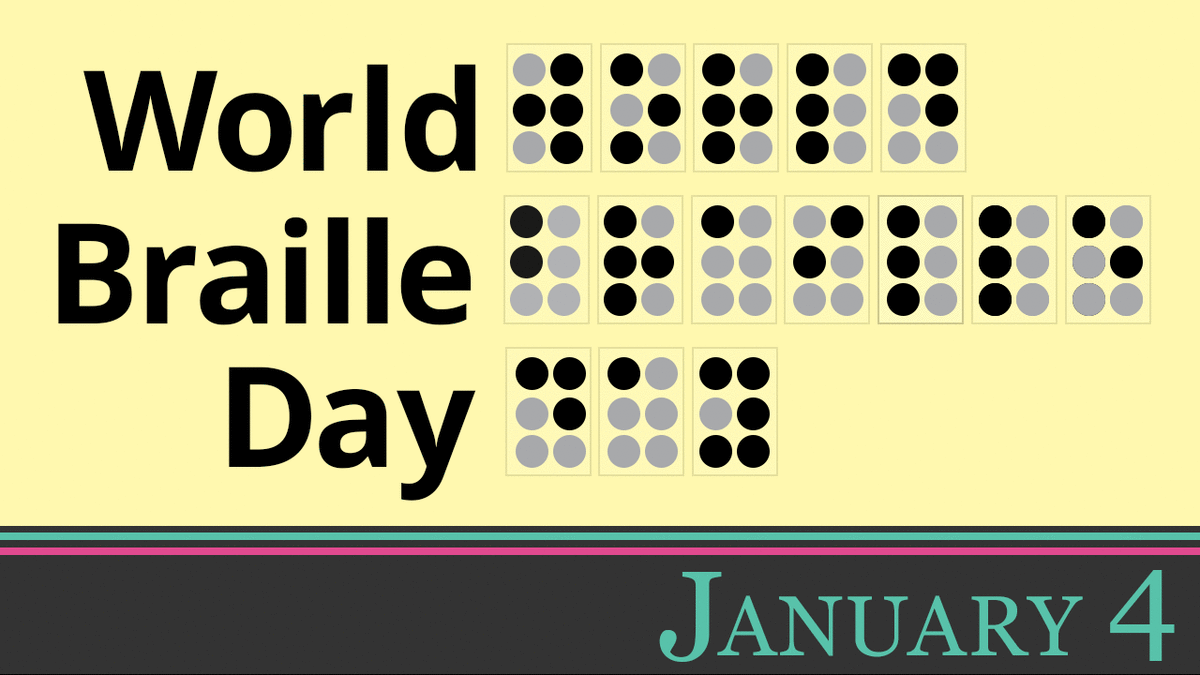1. World Braille Day promotes the importance of braille.
World Braille Day commemorates awareness of the importance of braille as a means of communication in the full realization of the human rights for people who are blind or have visual disabilities. Louis Braille's birthday, January 4, was chosen to mark the day. It was chosen in 2018 by the United Nations General Assembly in a proclamation.
2. Louis Braille invented braille.
Louis Braille was blinded at the age of 3 by a leather working awl in his father's saddle-making shop. When he was a student at the Royal Institute for Blind Youth, he developed a touch system for reading and writing. Ironically the system used an awl-like stylus to punch marks in paper that could be felt and interpreted. It was mostly ignored until after Braille died on January 6, 1852.
3. Braille is not a language.
Braille is a system or code, not a language. But it can be used to write almost any language with its tactile alphabet. A unit in print is a letter. In contrast, in braille a unit is called a cell. A cell consists of 6 dots.
4. Braille helps enable independence from audio.
Without braille, some people with disabilities such as some who are blind, would be entirely dependent on computers with voice synthesizers or audio recording.
5. For some people braille is the only way they can read.
Some people who are deaf-blind cannot use audio formats making braille their sole means of literacy and communication.
6. A braille printer embosses.
A modern braille printer receives data (e.g., digital text) from a computer device and embosses that information on paper with pins. It creates tactile dots, typically on heavyweight paper that can be read with the fingers. Braille print embossers use more pages for the same amount of information than a typical printer.
7. Some devices can translate digital text to braille instantly.
Refreshable braille displays and braille note takers refresh as a person reads content. They use a series of pins that raise and lower to duplicate the content in Braille.
These devices enable some people with disabilities who know braille to browse the web , read webpages, do email, and save and edit their own written work.
8. Braille can be used for mathematics and music
Nemeth code is a type of braille for mathematics. For example, it can be used for arithmetic, algebra, trigonometry, and calculus.
Most music can be written in braille. Braille music uses the regular 6-dot cell. But has its own translations and syntax.
9. Accessible web content is accessible to braille devices
When web content is built in a way that is accessible, it usually is accessible to braille devices. Many Web Content Accessibility Guidelines (WCAG) Success Criteria apply. So, conforming to WCAG will help produce content accessible to braille devices. For example:
- Use suitable alternative text for non-text items. (alt text, long descriptions if needed, transcripts, etc.)
- Use skip navigation methods.
- Follow best practices for device independence and progressive enhancement.
10. A good reason exists for why braille is used on drive-through ATM buttons.
It ensures that people traveling in the back seat of cars can use Automatic Teller Machines (ATMs) to independently make a transaction. A person who is blind can use a drive-through ATM independently if they sit behind the driver. They do not need to trust another with their personal financial information.
In addition, if a person can drive by using special glasses called bioptics but is unable to read print materials they can use the braille keypad.
The Americans with Disabilities Act (ADA) mandates that all ATMs must be accessible to people with visual disabilities, and drive-through ATMs aren't exempt.
Further Information
- World Braille Day - United Nations
- Louis Braille - National Braille Press
- Learn Braille In One Lesson (Video)
- Deafblindness - Wikipedia
- Braille Printers - American Foundation for the Blind
- Refreshable Braille Displays - American Foundation for the Blind
- Braille Music - Royal National Institute of Blind People
- Nemeth Tutorial - Paths to Literacy
- 2010 ADA Standards for Accessible Design - Americans with Disabilities Act Accessibility Standards
